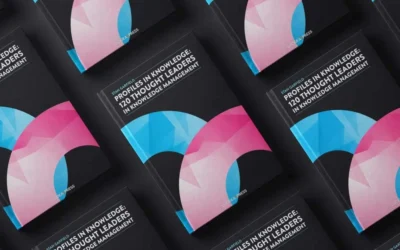Your Audience is… Changing! (Part 1)

Ron Aspe
The way people engage with information every day is changing. Why is this important? It’s not about what we industry veterans think is the “best way” to find important content – it’s what our end users think that matters.
Many of today’s knowledge and information management systems end users also rely on social media sites such as Facebook and Twitter. This technology is now a critical, daily part of modern culture.
Millennials, who now occupy entry level and midlevel positions at the firms we work in, have a completely different set of expectations when it comes to getting and sharing information. For example, they tweet.
Know your audience
Most tweets are actually “re-tweets” or “shared” content rather than original content … which means that with today’s new media there is a potential magnifying effect for each unique piece of content, caused by a sharing network of interested people.
Those users who are active on social media sharing don’t do Google searches for their daily content…instead, they follow people who post or tweet on topics they are interested in, and in that way information flows to them.
Imagine that this social media user now joins your company. You should find out what their expectations are with regard to communication channels, and the excess of information available to them …
And understand that relevant information isn’t necessarily searched for…instead they expect that relevant information will find them. (And even that information they don’t know they need or want will find them!)
Push the good stuff
Millennials, who have grown up with targeted media that tracks them based on information shared across the Web, have become accustomed to that information delivery approach. Will Millennials resist your efforts to push content to them? No, they won’t. They’re your perfect audience – if the information you deliver is relevant.
With social sharing sites such as Reddit, Instagram and Twitter, interesting content can be instantly communicated, and information can be passed on quickly between interested users.
One key to building awareness of your information center’s content and services is to broadcast good content using social media functionality, and make it easy to share. When you do this, there is no need to build or moderate anything.
Are you using social sharing functionality at your organization? Do you use an Enterprise Social Network such as Yammer? If so, we’d love to hear about your experience.

Ron Aspe
Stan writes regularly for Lucidea’s Think Clearly blog. Subscribe to ensure you never miss a post with engaging information for KM practitioners and special librarians! Learn about Lucidea’s Presto, SydneyDigital, and GeniePlus software with unrivaled KM capabilities that enable successful knowledge curation and sharing.
Similar Posts
Only You Can Prevent Knowledge Loss: How to Practice “Knowledge Archaeology”
An overview of ways in which knowledge is lost, with examples of how to perform knowledge archaeology to recover and restore it.
Ready to Read: Profiles in Knowledge: 120 Thought Leaders in Knowledge Management
We are pleased to announce that Stan Garfield’s new book, Profiles in Knowledge: 120 Thought Leaders in Knowledge Management, is now available from Lucidea Press.
Lucidea’s Lens: Knowledge Management Thought Leaders Part 92 – Jay Liebowitz
Jay Liebowitz is a professor, consultant, author, and editor. His research interests include knowledge management, data analytics, intelligent systems, intuition-based decision making, IT management, expert systems, and artificial intelligence.
Lucidea’s Lens: Knowledge Management Thought Leaders Part 91 – Frank Leistner
The late Frank Leistner was the former Chief Knowledge Officer for SAS Global Professional Services, where he founded the knowledge management program and led a wide range of knowledge management initiatives up until 2012.



